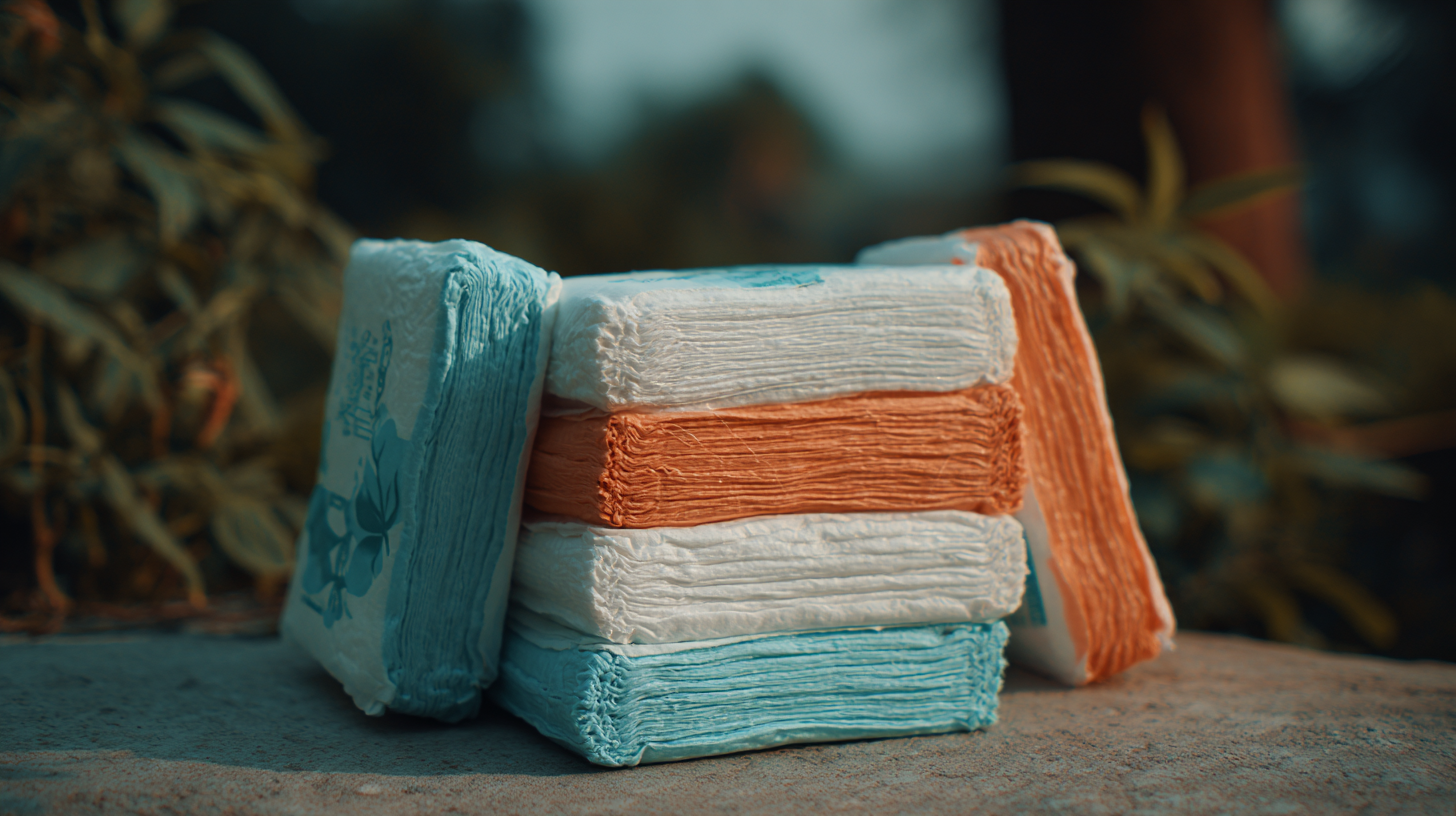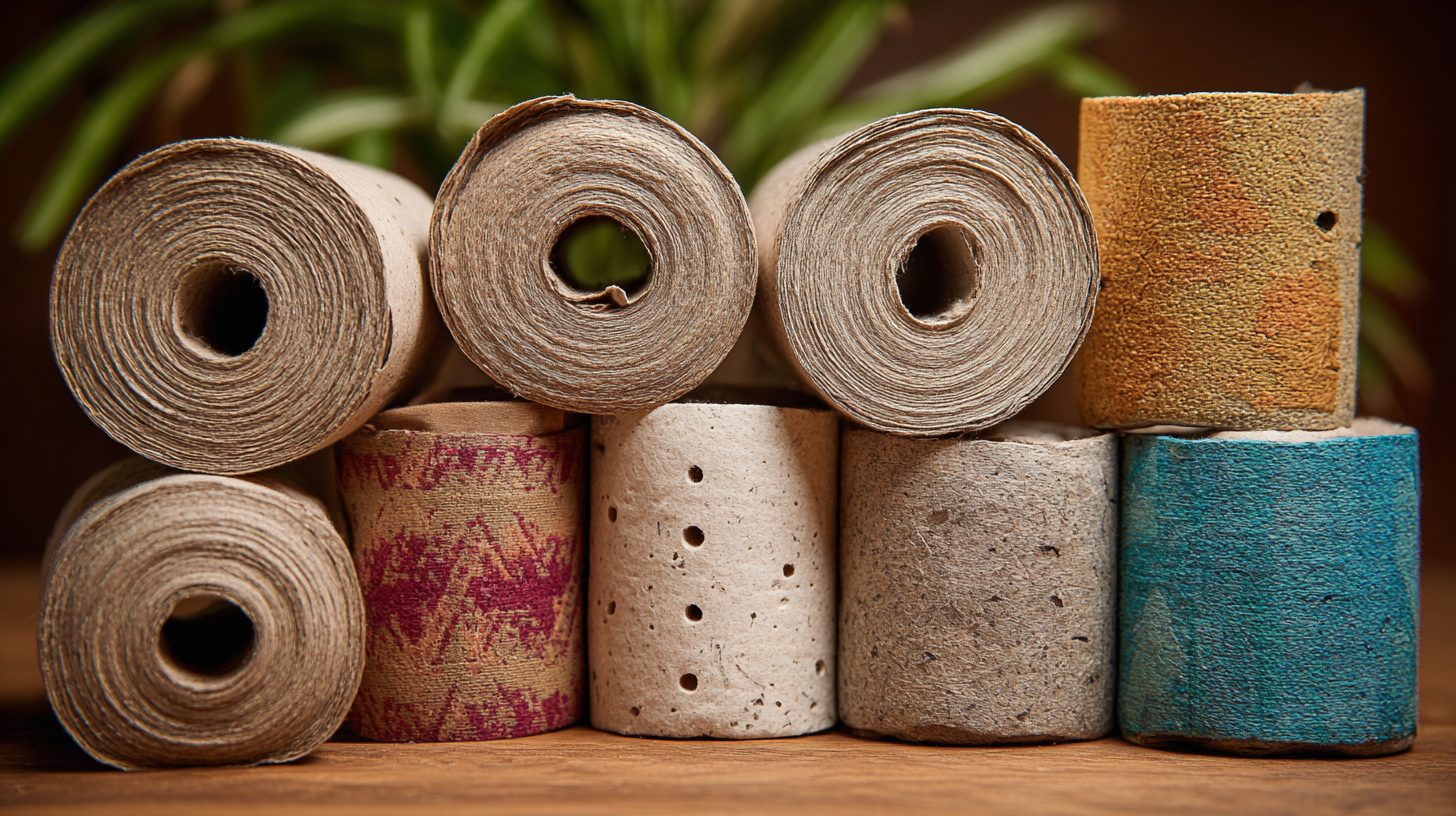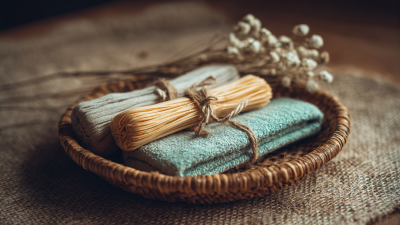
The Eco Friendly Future of Recycled Sanitary Pads Fiber for Sustainable Living
As the global conversation surrounding sustainable living intensifies, innovative solutions are emerging to address the environmental impact of menstrual products. The growing awareness of plastic waste has led to a surge in interest regarding Recycled Sanitary Pads Fiber, a promising alternative that not only reduces landfill contributions but also supports eco-friendly practices.

According to the World Economic Forum, approximately 300 million menstrual products are used each month worldwide, significantly burdening our ecosystems. The incorporation of recycled fibers in sanitary pads can potentially divert millions of tons of waste from landfills and reduce carbon emissions associated with production. Furthermore, a recent report by the Ellen MacArthur Foundation highlights that the shift towards sustainable menstrual products could lead to circular economy opportunities worth billions in the coming years.
Embracing recycled sanitary pads fiber is not just beneficial for the environment; it reflects a broader commitment to a greener, more sustainable future for all.
Exploring the Benefits of Recycled Sanitary Pads for Eco-Conscious Consumers
As eco-conscious consumers increasingly seek sustainable alternatives in personal care products, recycled sanitary pads have emerged as a viable option that aligns with their values. The production of these pads from recycled fibers not only reduces waste but also minimizes reliance on fossil fuels, making them a more environmentally friendly choice compared to traditional products made from polyethylene (PE). Recent studies have shown that polylactic acid (PLA) sanitary pads, a type of recycled product, have a significantly lower environmental impact, highlighting the benefits of innovation in this space.
Moreover, the rising demand for sustainable feminine hygiene products is reflected in market trends. The global market for menstrual cups and reusable period panties is projected to grow substantially over the next decade, indicating a shift in consumer preferences towards eco-friendly options. As brands develop more sustainable designs and materials, recycled sanitary pads present a unique opportunity for environmentally conscious consumers to engage in sustainable living while ensuring their health and hygiene needs are met.
The Eco Friendly Future of Recycled Sanitary Pads Fiber for Sustainable Living - Exploring the Benefits of Recycled Sanitary Pads for Eco-Conscious Consumers
| Feature | Description | Environmental Benefit | Consumer Benefit |
|---|---|---|---|
| Biodegradability | Made from recycled fibers that decompose within a year. | Reduces landfill waste and pollution. | Safer for the environment and public health. |
| Sustainable Sourcing | Utilizes surplus textiles and cotton from other industries. | Less resource-intensive compared to traditional production methods. | Contributes to a circular economy. |
| Energy Efficiency | Manufactured using lower energy processes than conventional pads. | Lowers carbon footprint associated with menstruation products. | Cost-effective production could lead to lower retail prices. |
| Healthier Materials | Free from harmful chemicals and synthetic materials. | Promotes better health outcomes for users. | More comfortable and skin-friendly for sensitive users. |
| Community Impact | Produced in fair-trade certified facilities. | Supports local economies and provides fair wages. | Empowers consumers to support social justice through purchasing choices. |
Step-by-Step Guide to Creating Your Own Recycled Sanitary Pads at Home
Creating your own recycled sanitary pads at home is not only a sustainable choice but also a practical way to manage waste. Research shows that approximately 45 billion disposable sanitary products are used globally each year, contributing significantly to landfill waste (Source: The World Health Organization). By opting for homemade recycled pads, individuals can reduce their environmental impact while ensuring comfort and hygiene.
To start, you'll need some basic materials: clean cotton fabric, an absorbent layer (such as old fleece or towels), and a waterproof backing (like PUL fabric). Cut the fabric into desirable pad shapes and layer the materials accordingly. Sew them together, making sure to leave a pocket for adjustments. Utilizing leftover or unused textiles also promotes a circular economy, as highlighted by the Ellen MacArthur Foundation, which emphasizes the importance of reusing materials to minimize waste.
Tip: When choosing fabrics, opt for organic or pre-loved materials to enhance the eco-friendliness of your pads. Additionally, consider using natural dyes to add color without harmful chemicals. This way, you not only contribute to sustainability but also personalize your experience, making your sanitary products uniquely yours.
Sourcing Sustainable Materials for Eco-Friendly Sanitary Pad Production
The global shift towards sustainable materials for sanitary pad production is gaining momentum, driven by increasing awareness of environmental issues associated with conventional plastic products. The rising demand for biodegradable options has led to innovative sourcing of sustainable fibers, such as polylactic acid (PLA) and cornstarch. Research indicates that PLA sanitary pads exhibit a 17 times lower environmental impact compared to traditional polyethylene alternatives, significantly reducing reliance on fossil fuels and minimizing overall carbon footprint.

In addition to PLA, other natural resources such as cornstarch and even invasive water hyacinth are being explored as viable materials for eco-friendly sanitary pads. These alternatives not only help mitigate plastic pollution but also present scalable solutions that can meet the needs of an expanding market. As the biodegradable sanitary pad market is projected to grow from USD 1.26 billion in 2025 to USD 2.54 billion by 2033, the focus on sourcing sustainable materials is critical in revolutionizing feminine hygiene products and promoting sustainable living practices worldwide.
Innovative Brands Leading the Way in Recycled Sanitary Pad Solutions
The landscape of sustainable personal care products is rapidly evolving, with innovative brands paving the way for a greener future through recycled sanitary pad fibers. The introduction of new recycled fiber brands showcases a commitment to eco-friendly solutions in hygiene products. Such initiatives not only address environmental concerns but also provide consumers with cost-effective options. For instance, some users have reported a significant drop in their monthly expenditures on sanitary products, highlighting how sustainable innovations can lead to both environmental and financial benefits.
Recently launched recycled fiber brands have responded to the growing consumer demand for sustainable sanitary pads, driven by an increased awareness of the sanitary product industry's environmental impact. The collaboration between textile innovation and fashion indicates a strong market interest in products that contribute to a circular economy. As these brands continue to emerge and foster eco-conscious consumer behavior, the future of hygiene products appears to be leaning towards an era that prioritizes not just function but also sustainability, thus reshaping the industry's landscape for generations to come.
Promoting Awareness: Educating Communities on Sustainable Sanitary Products
Educating communities about sustainable sanitary products is essential for promoting menstrual health and hygiene, particularly in areas where access to safe and affordable menstrual products remains a challenge. Millions of women and girls face period poverty, which not only affects their health but also limits their participation in daily activities and education. By raising awareness about eco-friendly alternatives, such as recycled sanitary pads, communities can empower women to make informed choices that positively impact both their well-being and the environment.
In regions like Rajasthan, where menstrual hygiene indicators are particularly low, targeted education initiatives can help shift cultural perceptions and improve access to sustainable products. Menstrual hygiene management (MHM) education must be integrated into public health efforts, ensuring that young women understand the importance of proper hygiene along with the environmental implications of their choices. By fostering dialogue around these topics, we can tackle both the stigma surrounding menstruation and the environmental challenges posed by conventional products. Such comprehensive educational strategies are vital to achieving a more sustainable and equitable future for women everywhere.

Related Posts
-

How to Choose the Best Plastic Free Sanitary Pads for Your Eco Friendly Lifestyle
-

How to Choose the Best Recycled Sanitary Pads Fiber for Eco-Friendly Menstrual Care
-

The Unsung Benefits of Plastic Free Sanitary Pads and Their Positive Impact on Women's Health and the Environment
-

Your Ultimate Guide to Everyday Sanitary Pads Fiber: Understanding Health Benefits and Eco-Friendly Choices
-

Discover the Advantages of Best PSF Fiber: Improving Efficiency and Reducing Costs in Manufacturing
-

Exploring Hydrophobic Natural Fibers at the 138th China Import and Export Fair in 2025



